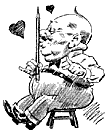Introduction
This unit arose from recognition of the need for each graduate entering the multimedia job market to be able to demonstrate traditional artistic concept visualisation skills as well as contemporary computer-based drawing skills.
It is particularly desirable to develop and maintain the skills to sketch, draw and visualise quickly and effectively by hand if there is any possibility that as a graduate you will be involved in concept development in the advertising, news and/or other publications, graphic and web-site design, educational media, film and television, game development, theatre set design, exhibition design, fine art practice/teaching and other creative industries such as fashion design and interior design. The ability to economically communicate and convey visual concepts will also come in handy if you are to participate effectively in other roles in creative development teams.
With regard to drawing skills, we have most likely all had the experience where during our school years it emerged that some student or other appeared to have inherited the “art gene” and excelled when it came to draughting (to 'draught' means to draw in outline or to sketch - the Americans also spell it, 'drafting'). Such people can produce convincing and stylistically coherent renderings of people, scenes and objects with apparent ease. They seem to possess an inherent talent for interpreting forms and relationships perceived in real or imaginary 3D space and translating them into lines, tones, textures, spaces and representations of depth on a 2D plane. Such talented people are welcome to undertake this unit (and we hope that you will share any wisdoms you may have with your peers), but the unit is actually designed for the 99.9% of the population who need more guidance and practice to be able to illustrate and visualise effectively.
The approach of this unit is based on the premise that you do not need to be a maestro to successfully communicate ideas visually on paper or screen. In fact, the underlying principle is that anyone can develop the confidence to express themselves in this way through practice. To achieve this goal of becoming confident with one’s visualisation capability it is important to accept the following ground rules:
1/ There is no right or wrong way to draw.
2/ Anyone can do it.
3/ Both confidence and skill increase with practice.
Having said that there is no right or wrong way to draw, it is still the case that there are a variety of approaches to drawing, certain perceptual habits (ways of viewing and interpreting what you see), and a number of techniques (ways of working with tools, implements and media) that may lead to more effective practice and it is these that can be taught and learned in a unit such as this.
Expectations
It should be obvious then, that the aim of this unit is not to turn each student into a Norman Lindsay or a Ida Rentoul Outhwaite ( see the "Related Links" in the left hand panel). The aim of the unit is to assist students to develop a level of fluency and confidence with manual sketching and drawing that is commensurate with the requirement for developing and communicating visual concepts and ideas in creative team environments, and for presenting concepts to prospective clients and/or funding bodies.
Some case studies of industry professionals
For some examples of typical conceptual storyboards and visuals visit the links in the "Related Links" panel at left. You may be surprised at the variety of contexts where visualisation skills are required as part of the creative and production processes.
You will see after following these links that, in addition to illustration and visualisation being a basic skill for creative communication development, there are roles for professionals who specialise in producing concept sketches and comprehensive visuals for all areas of the creative industries. So if, during this introductory unit, you find that you have particular aptitude for this kind of work there will be incentive to develop your talent.
As you progress beyond the basics, an appropriate aim to have in mind if you wish to excel at drawing is that of developing a personal style or range of styles that are characteristic and unique to yourself. However this stage is usually achieved with much dedicated practice. It is not required that you reach such a stage to pass this unit, but evidence of the development of a confident style may justify a higher grade.
Contexts
Fundamentally this unit will introduce you to the concept of using drawing as a visual communicative channel to accompany and compliment textual channels such as proposals. Students will be briefed on some appropriate styles of drawing as they are applied in different contexts. To this end, the contexts focused on are:
• drawing as representation
• drawing as visualisation
• drawing as communication
• cartooning basics
Minimum requirements
The minimum requirement for you to pass this course is to demonstrate that you:
• have learned the concepts and standard techniques presented in the study materials;
• can discuss drawing qualities and techniques using the terminology presented in the course lectures and resources; and,
• have practiced sufficiently to present clear visuals that meet the assessment criteria.
Unit Structure
The unit is structured so that there are weekly lectures and weekly tutorials that comprise exercises which lead you through a program of hand-drawing practice, visualisation and cartooning. In most weeks there are also readings associated with both the lectures and the tutorials.
Lectures
The lectures present topics themed to coincide with the practical tutorials. These topics are listed in the Unit Profile and in the Study Schedule. Overall, the lectures constitute an informative overview of drawing styles and techniques, taking in historical and cultural contexts that include different ways of seeing, associated conceptual interpretations and representations. The lectures also introduce you to qualities that are considered valuable in evaluating illustrative art and to the language and common terms with which these qualities may be discussed.
For the benefit of all students the lectures and the tutorials are presented in on-line format. See the study schedule for a table of weekly topics.
In response to criticism of the delivery of lectures via the video-conferencing system and the poor attendance of them we are no longer delivering the lectures via that mode. Thus, on CQ regional campuses there is no lecture timetabled. Instead a brief overview of each week's material will be presented in a short pre-recorded video. Arrangements may differ on the metropolitan campuses (Sydney and Brisbane), so check your campus timetable if you are studying at either of these.
The short-form lecture slides will be available in Powerpoint and recordings of videoconferences from previous years for those few students who appreciate this format. However, please do not rely only on the lecture slides only for learning the unit content. You should read through the weekly lecture, readings and engage with the linked resources available in here in the Study Schedule section.
Tutorials
The tutorial exercises are graded in difficulty so as to ease students into the practice of drawing. They are designed to get you started and to offer you advice on how to approach perceptual and technical aspects of drawing and illustration. Completing the tutorials will set you well on your way to drawing with the skill required to pass this course. However, simply completing the weekly tutorial exercises will not normally be sufficient in itself to develop a fluent and confident, personal sketching and drawing style. To achieve such an aim most people need to develop an daily drawing habit, ongoing over an extended time. If you are enrolled on a campus (i.e. not in Distance mode) you should attend the timetabled tutorial.
Text book
The lectures and drawing tutorials make reference to the prescribed text for this unit, The New Drawing on the Right Side of the Brain, and to other weekly readings and Internet resources. Some of you may already be familiar with Dr Betty Edwards’ text. For over twenty years now it has been recognised as a classic. She emphasises that drawing involves different mental processes from language-based communication and further, that these processes occur predominantly in the right hand of the brain. Consequently, many of the exercises that she promotes are designed to encourage drawing students to activate right-brain processes that she believes in many cases are under-utilised. She is also of the opinion that the key to success in learning to draw is actually learning to see shapes, spaces and relationships differently—processing visual information holistically rather than as multiple discrete, logically related entities. Her approach has proven to be successful in teaching people to draw.
Whilst Edwards’ approach arises from her interpretation of Nobel Prize-winning scientific research from the ‘60’s and ‘70s, recent studies using tomography (CAT, PET, MRI scanning), electroencephalograph (EEG) and other techniques to visualise brain activity under various experimental conditions show that the activities in the brain are far more complex than a simple left and right dichotomy explanation would suggest. This does not detract from the success of Edwards’ training methods. So that you understand what her principle arguments are, certain pages of of her book have been prescribed as recommended reading for this week. See the reading list in the left hand panel of the weekly web pages for the reading list for each week.
Reading resources
Additional required and recommended reading material is provided via the CQU Library Unit Resources Online (CRO) index and via web links. These also appear in the left hand panel of the web page each week.
Assessment in brief
There are three assignments for this unit. The details of the assignments may change from term to term. The current requirements and the associated criteria are published in the current term Unit Profile. In relation to these weekly lectures there are a series of four online quizzes and which comprise 10% of the overall mark possible for this unit, which have been instituted in order to examine your engagement with the lectures and the knowledge of the theoretical material presented in them.
Relax and enjoy
Learning to draw is a creative activity that is sometimes considered to have therapeutic value. Firstly this is because there can be an almost meditative quality to the type of focused observation that one engages in when sketching from life. Secondly, because of the way that one’s visual perception and haptic skill are coordinated during such activity, one is exercising a sensory-motor circuit between our bodies and the world that few other activities in contemporary life offer the opportunity for. The best way to enjoy drawing is to relax into it.
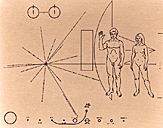
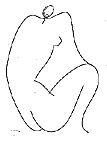



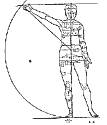
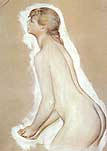
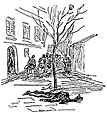
 Week 9: Fantasies become actualities
Week 9: Fantasies become actualities


